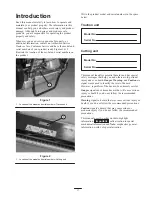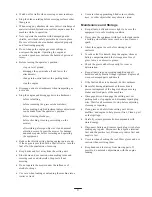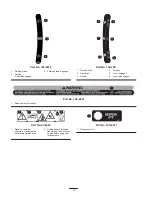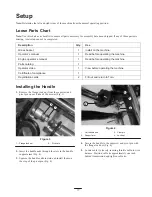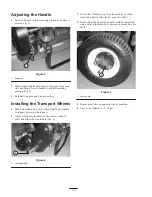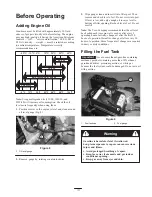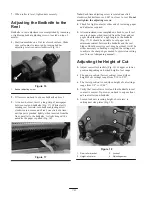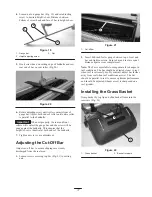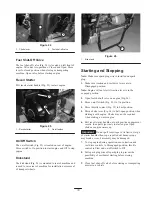
5
•
Watch out for traffic when crossing or near roadways.
•
Stop the blades rotating before crossing surfaces other
than grass.
•
When using any attachments, never direct discharge of
material toward bystanders nor allow anyone near the
machine while in operation.
•
Never operate the machine with damaged guards,
shields, or without safety protective devices in place.
Be sure all interlocks are attached, adjusted properly,
and functioning properly.
•
Do not change the engine governor settings or
overspeed the engine. Operating the engine at
excessive speed may increase the hazard of personal
injury.
•
Before leaving the operator’s position:
–
stop on level ground;
–
disengage the power take-off and lower the
attachments;
–
change into neutral and set the parking brake;
–
stop the engine.
•
Disengage drive to attachments when transporting or
not in use.
•
Stop the engine and disengage drive to attachment
–
before refuelling;
–
before removing the grass catcher/catchers;
–
before making height adjustment unless adjustment
can be made from the operator’s position.
–
before clearing blockages;
–
before checking, cleaning or working on the
mower;
–
after striking a foreign object or if an abnormal
vibration occurs. Inspect the mower for damage
and make repairs before restarting and operating
the equipment.
•
Reduce the throttle setting during engine run-out and,
if the engine is provided with a shut-off valve, turn the
fuel off at the conclusion of mowing.
•
Keep hands and feet away from the cutting unit.
•
Slow down and use caution when making turns and
crossing roads and sidewalks. Stop reels if not
mowing.
•
Do not operate the mower under the influence of
alcohol or drugs
•
Use care when loading or unloading the machine into a
trailer or truck
•
Use care when approaching blind corners, shrubs,
trees, or other objects that may obscure vision.
Maintenance and Storage
•
Keep all nuts, bolts and screws tight to be sure the
equipment is in safe working condition.
•
Never store the equipment with fuel in the tank inside
a building where fumes may reach an open flame or
spark.
•
Allow the engine to cool before storing in any
enclosure.
•
To reduce the fire hazard, keep the engine, silencer,
battery compartment and fuel storage area free of
grass, leaves, or excessive grease.
•
Check the grass catcher frequently for wear or
deterioration.
•
Keep all parts in good working condition and all
hardware and hydraulic fittings tightened. Replace all
worn or damaged parts and decals.
•
If the fuel tank has to be drained, do this outdoors.
•
Be careful during adjustment of the machine to
prevent entrapment of the fingers between moving
blades and fixed parts of the machine.
•
Disengage drives, disengage the cutting unit, set
parking brake, stop engine and disconnect spark plug
wire. Wait for all movement to stop before adjusting,
cleaning or repairing.
•
Clean grass and debris from cutting unit, drives,
mufflers, and engine to help prevent fires. Clean up oil
or fuel spillage.
•
Carefully release pressure from components with
stored energy.
•
Disconnect battery and remove spark plug wire before
making any repairs. Disconnect the negative terminal
first and the positive last. Reconnect positive first and
negative last.
•
Use care when checking the reel. Wear gloves and use
caution when servicing them.
•
Keep hands and feet away from moving parts. If
possible, do not make adjustments with the engine
running.



